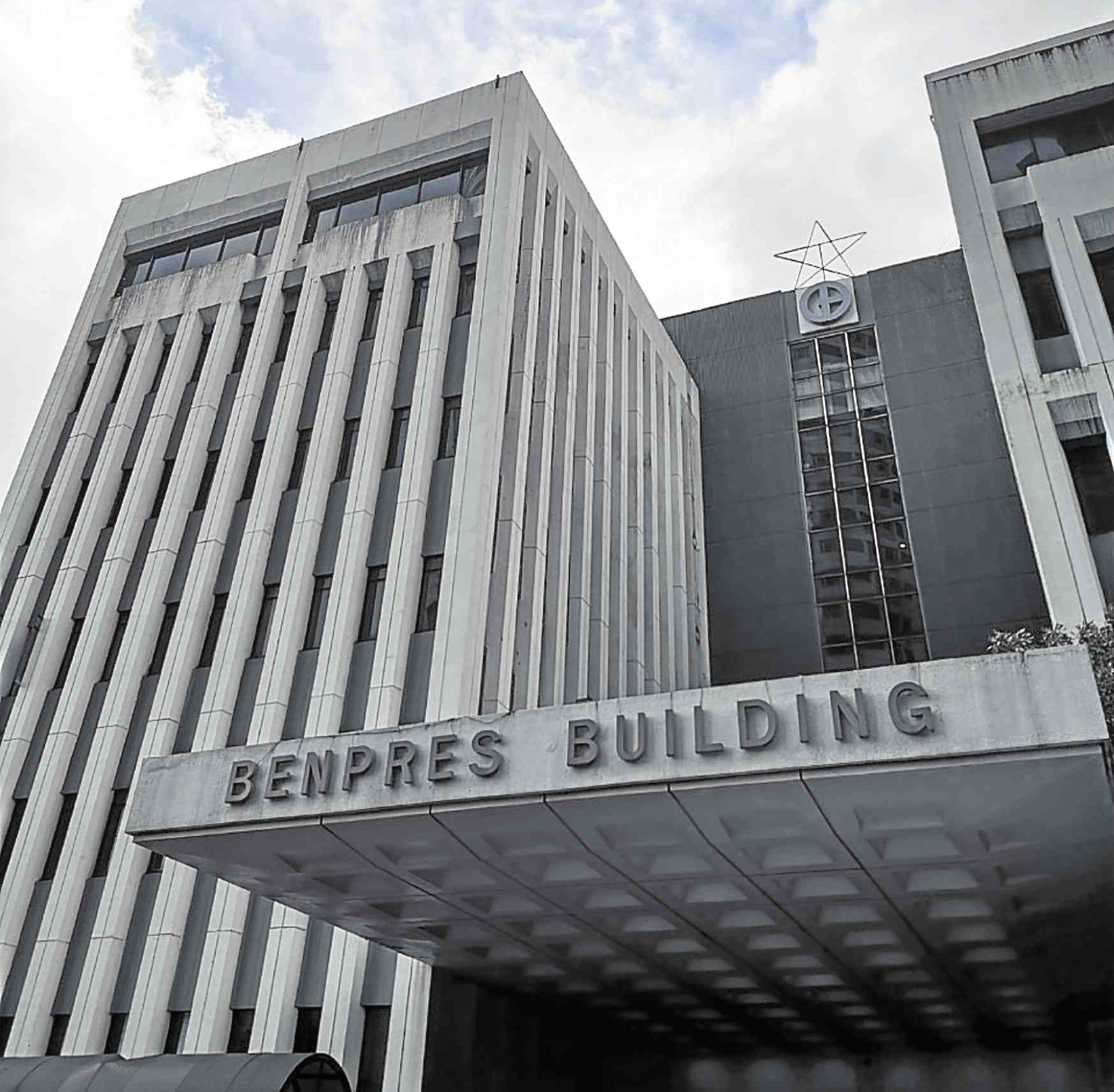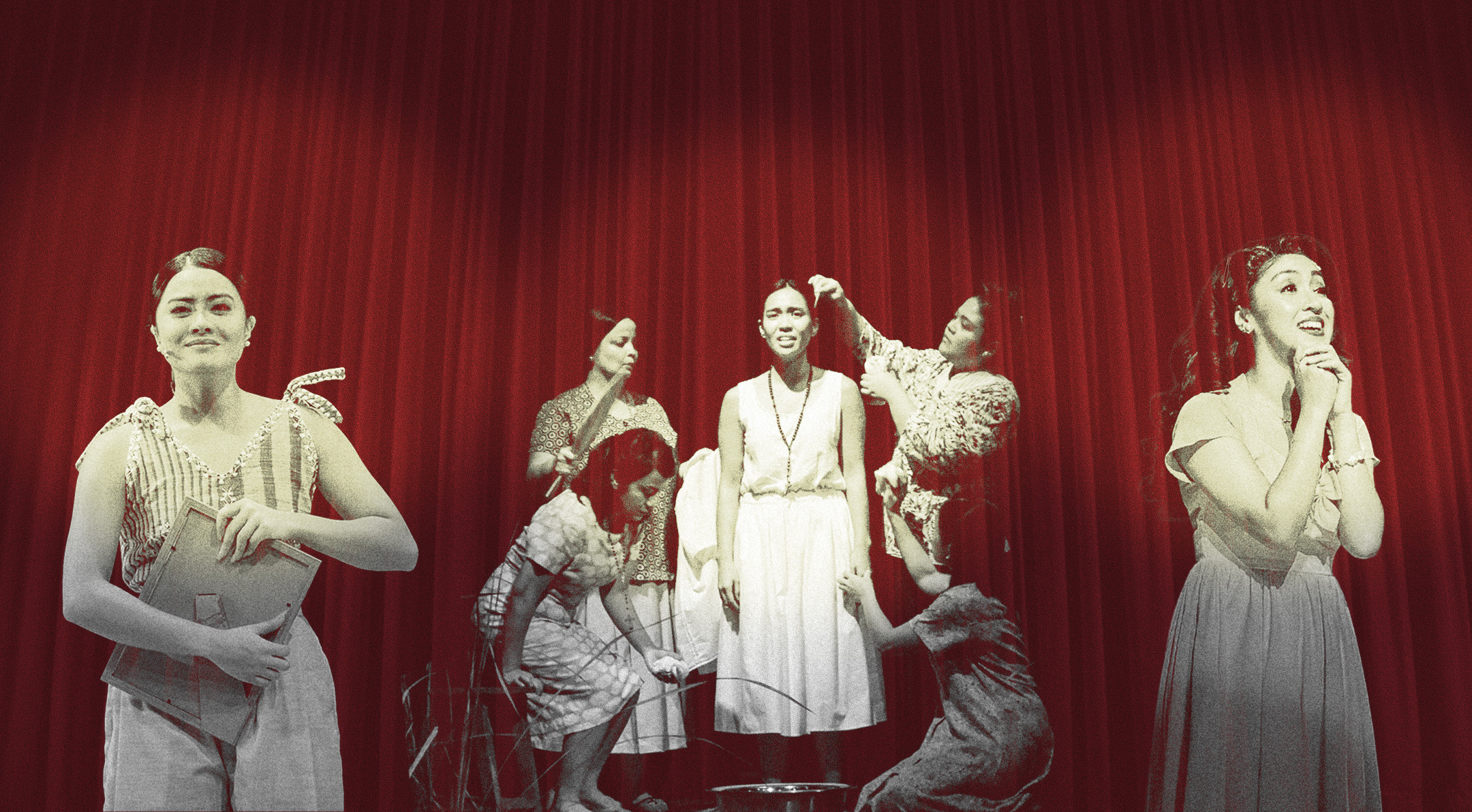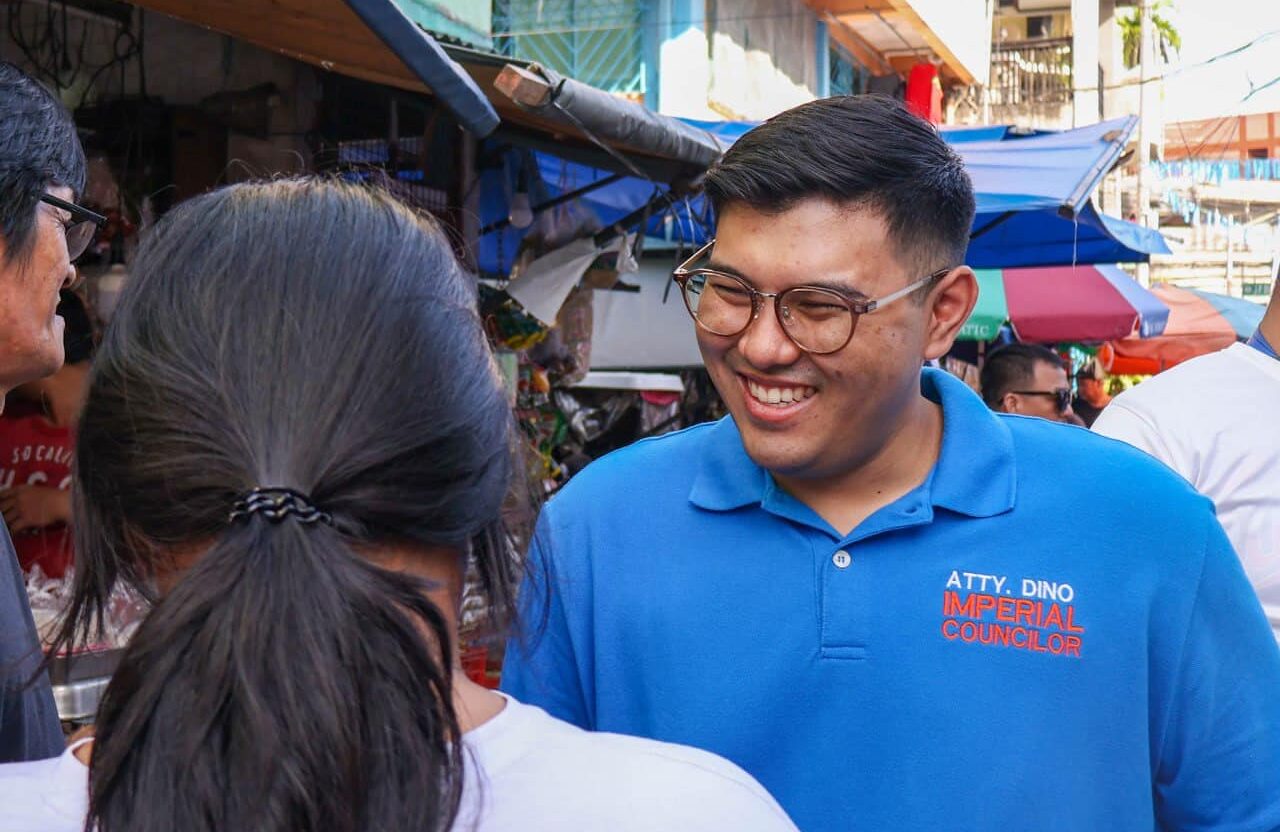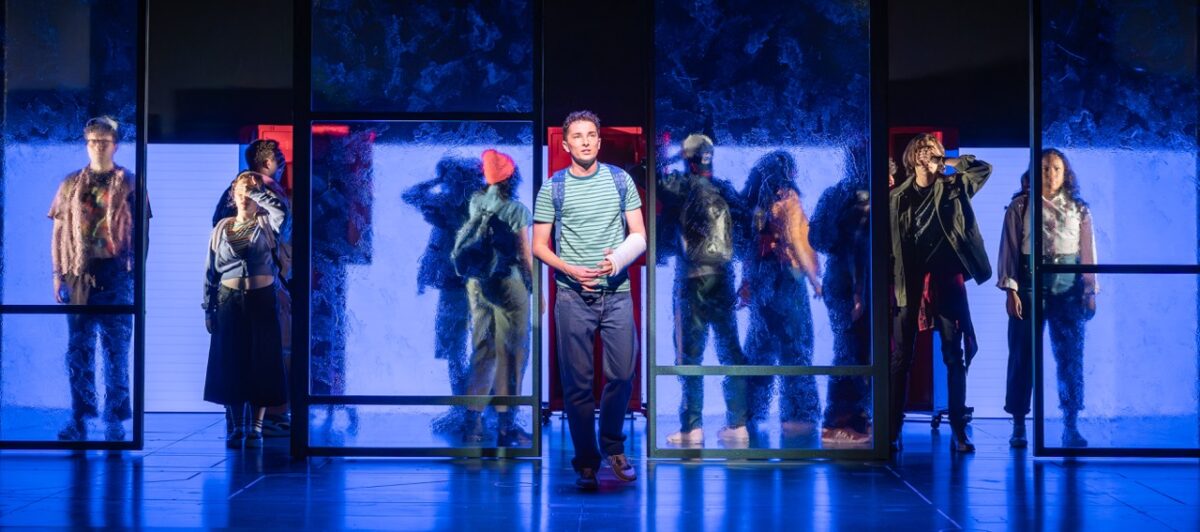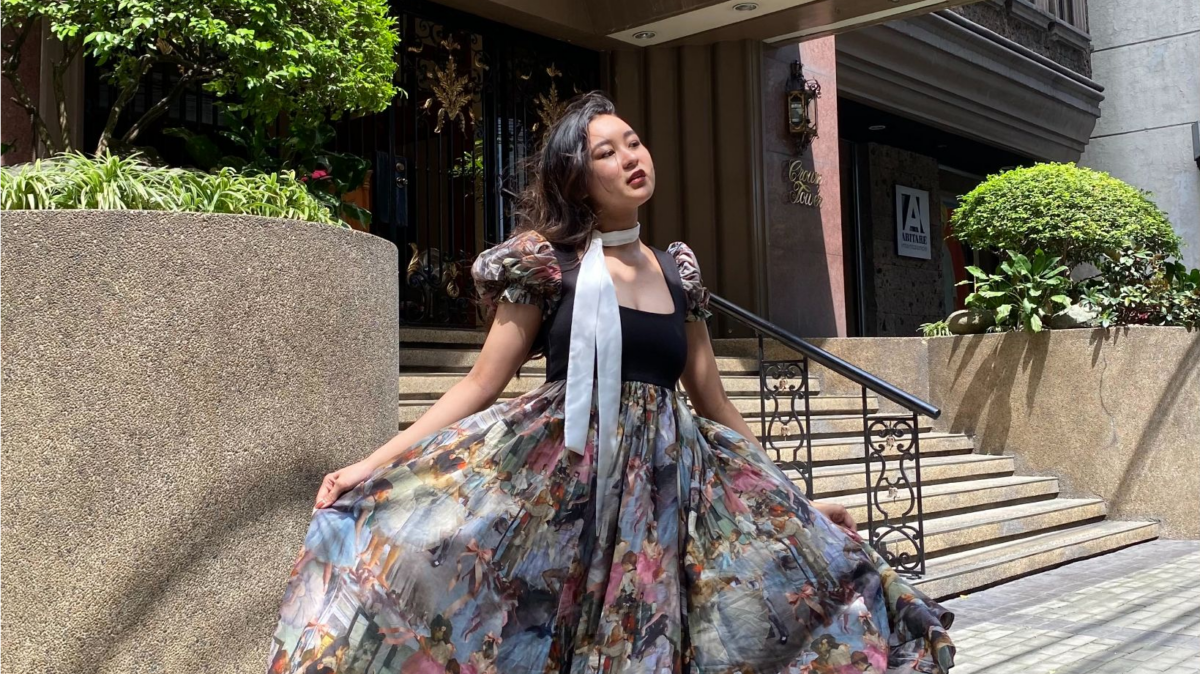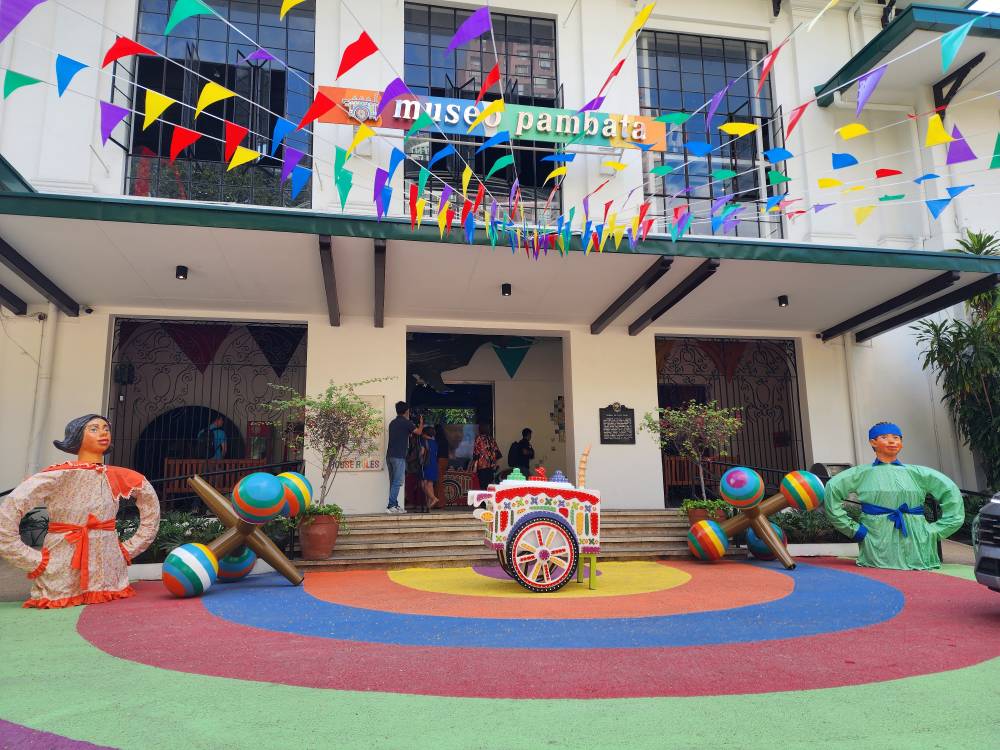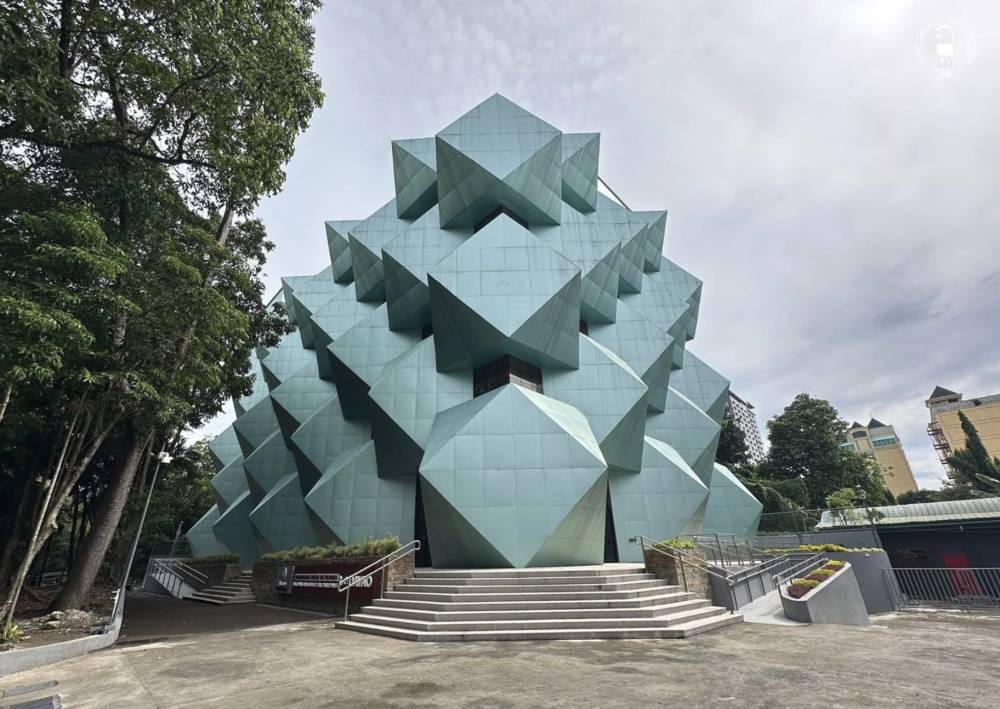
How do you say goodbye to a building you practically grew up in?
With lots of vitamin C, to begin with.
Given that almost everyone has cough, colds and flu these days, you must fortify yourself with vitamin C dosage when you step out of the house. (And given what could have been a preventable measles epidemic, you arm yourself with prayer and forbearance to understand this toxic environment.)
Just trying to make light of a heavy feeling. But honestly, as we got off the curved driveway of the Benpres building Wednesday afternoon, Jan. 30, came an unbidded feeling of instant familiarity. One didn’t need to summon it. And just as uninvited came the sadness.
This landmark building in Pasig will be taken down in a few months, and in its place will rise the Chronicle building, Chronicle being the building’s original name.
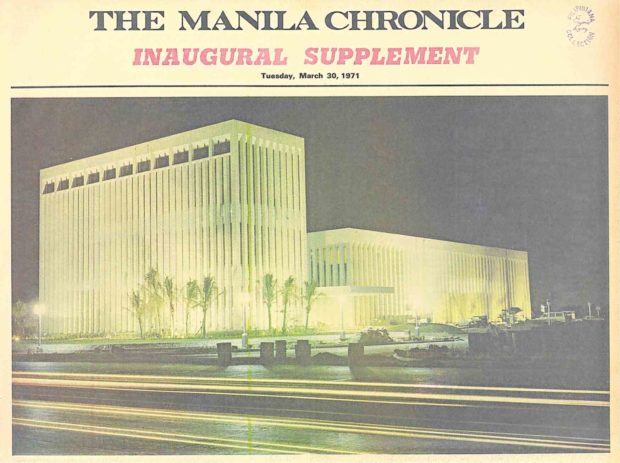
designed by Gabriel Formoso, the only high-rise in the Pasig vicinity.
That afternoon, the Lopez family—whose patriarch, the late Eugenio Lopez Sr., had the building constructed and inaugurated in 1971 to house the newspaper The Manila Chronicle—and the Lopez Group had invited family, friends and executives to bid the building a fitting farewell and to launch a commemorative coffeetable book, “Benpres (Stories Around a Landmark).”
The building was home to media and big business and the broadcasting/cable industry.
In this 48-year-old building we held office, intermittently, for over three decades. Given the long days we spent there as writer, editor, and later, as publishing manager, it was home to us—from our juvenile and clueless days to our more mature years.
The driveway alone, with the ledge arising on both sides, reminded us of the many nights we’d sit on the ledge, as a new journalism graduate waiting for our car, trying to process yet another chewing-out we got that day from our senior editors (wrong grammar, wrong layout, wrong detail… name it… we faced our ignorance responsibly).
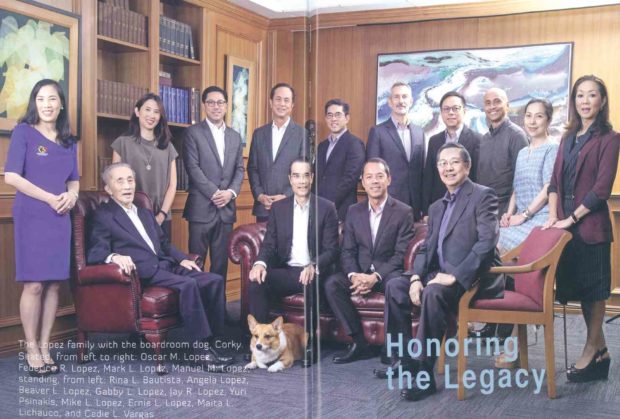
Lopez, Federico Lopez,Mark Lopez,Manuel Lopez; standing, from left, Rina Bautista, Angela
Lopez, Beaver Lopez, Gabby Lopez, Jay Lopez, Yuri Psinakis, Mike Lopez, Ernie Lopez,Maita
Lichauco, Cedie Vargas. Joining them is Corky, the boardroom dog.
And later, on the foyer right outside the lobby, behind the guard post, was where once hang the huge framed cover of Metro—that iconic black-and- white photo by Neal Oshima of an upcoming model, Angel Aquino, standing on a promontory overlooking the cemetery in Vigan (or was it in Bantay?), Ilocos Sur.
To shoot this, I remember, Neal and his team had to set out from our Villa Angela inn before the break of dawn, even if Angel had arrived in Vigan (by bus and tricycle) from Baguio (where she was a UP Baguio journalism student) so late that midnight. Neal wanted to capture that quality of light between the dying dark night and the birth of day.
That early light brought radiance to Angel’s beautiful face. Styled by Michael Salientes, Angel was in a Ramon Valera black kimona and a modern skirt.
Lesley Mobo would later tell us how that haunting cover inspired him to go into fashion design, when he was a high school student in Aklan.
Since we were trying to build up Metro magazine, then housed at Benpres, in the ’90s, our publishing president Ernie Lopez had to convince the Benpres building administrator to display this cover facsimile in the foyer—our infantile efforts at promotion and branding in those early years.
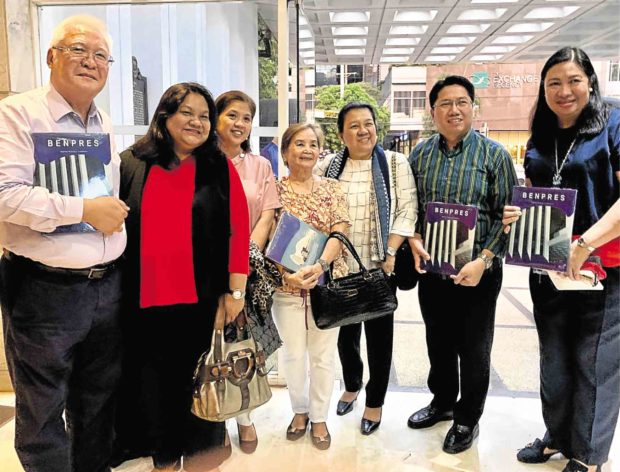
Ladies who lunch remember Benpres as the venue of Grassi’s, the precursor of a certain type of fine dining in Metro Manila, dining that drew the power crowds, and which introduced dishes such as soft-shell crab tempura, pan-fried sea bass, to become dining staple for decades.
Now, that early Wednesday afternoon, memories such as those streamed in at the mere sight of the lobby.
To the right, the door to the Lopez Museum and Library has been taken down, since the moving out started months ago. Where the door used to be is a wide open frame. Taking a peek inside, we saw Cedie Vargas, the Lopez Museum and Library director and president of the Lopez Group Foundation. Cedie was among the earliest to come that afternoon, obviously to give the afternoon’s program a final once-over.
How does she feel leaving the building she and her family had considered a familiar haunt, if not home, all these decades? No words could capture the feeling, she told us.
Now that the contents of the museum and library—the biggest and most extensive private museum and library (except universities) in the country—have been moved out of the building into storage, Cedie, with a chuckle, is looking at the light “distaff” side. She hopes that the “spirits” guarding the museum collections would follow them to their new venues in the near future: at the Proscenium at Rockwell, and in the new ecological setting at the Eugenio Lopez Center in Antipolo.
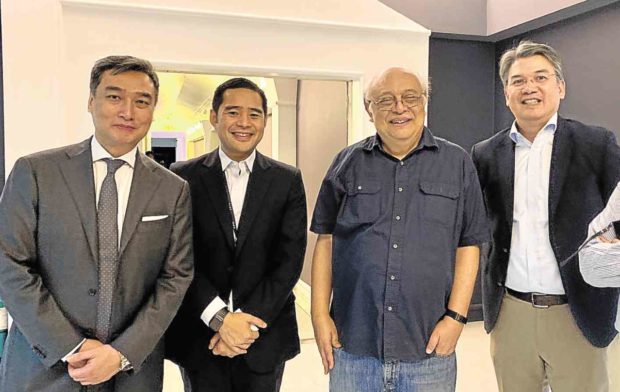
Shortly came the Lopez patriarch, Oscar Lopez, chair emeritus of the Lopez Group of Companies, and his wife, Connie. Arriving way ahead of the guests, he was shown a copy of the book to be launched.
In it, he wrote how the Chronicle building is “a historic building, not because it hosted historic events but because it signifies the constancy of the Lopez family in its nationalism.”
From the late ’70s to the ’80s, as Oscar’s older brother, Eugenio “Geny” Lopez Jr. went into exile in the US and upon the death of their father, it was Oscar and his younger brother, Manuel, who remained in the Philippines, holding the fort, so to speak, and they held office in this Benpres building.
In the book foreword, Manuel Lopez, the chair and CEO of Lopez Holdings Corp. and chair of Rockwell Land Corp., traced the building’s history: “Originally—that’s reckoning from its inauguration on April 3, 1971—Benpres Building had been intended primarily as the headquarters of our family’s national daily, The Manila Chronicle…
“The building, in fact, has been known for its flexibility, a virtue that, intended or not, allowed it to adapt to the exigencies of the times, of which the most unsettling, for the nation in general and for our family in particular, was 14 years of martial law…”
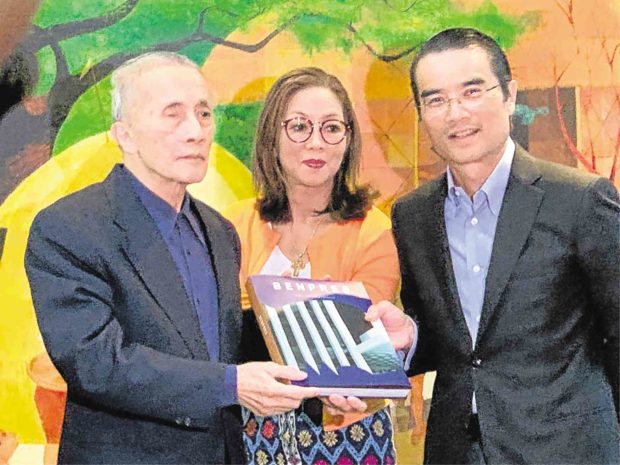
After the 1986 Edsa Revolution, this Chronicle building, by then renamed Benpres (after Benito and Presentacion Lopez, the parents of Eugenio Sr.), the foreword continued, “became the headquarters of a Lopez Group that was beginning to consolidate, looking robustly to growing again….”
Oscar Lopez recounts in the Introduction: “As I look back on its 47 years as home to the Lopez businesses, I see three distinct periods. The first spans the years immediately preceding and covering the dictatorship—1970-1986. The second period extends to 2010, during which I headed the First Philippine Holdings Corp. (FPH), the parent company of the Lopez power and property businesses. Those were years, darkened further by family tragedies: the passing of my father, Eugenio Lopez Sr., in 1975, and of my brother Geny, in 1999. The third period, running up to the present, has seen the torch passed to the third generation….”
Lopez continues: “We did have our moments of excitement. When Geny and fellow prisoner Serge Osmeña escaped from Fort Bonifacio in 1977, it was at the Chronicle Building that they stopped to wash up and change clothes before driving on to Lingayen, Pangasinan, from where they flew to freedom…”
The building was designed by noted architect Gabriel Formoso on a total floor area of 18,539 sqm, in a neighborhood that was mainly cogon grass. When it was inaugurated in 1971, an Ortigas business district wasn’t even a blueprint.
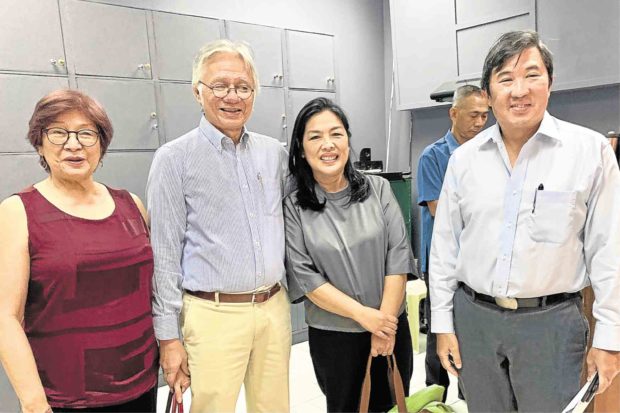
In the book’s chapter, “Modernism in the Lopez Buildings,” architect Dr. Gerard Lico writes about the era the building was built: ”… Form follows function was the design refrain among Filipino architects of the mid-1950s…”
In the Chronicle building, Formoso (1915-1996), Lico writes, “manipulated black and white forms to allow a play of light and shade on flat surfaces. He arranged geometric shapes in ways that reflect a sense of discipline, rather than indulgence…”
The Chronicle building is said to demonstrate “Formoso’s genius in its austere configuration, simplicity, authenticity and functionalism…”
However, that afternoon last Jan. 30, what bound the gathering wasn’t only the iconic design of the building, but more so a shared, cherished past.
Some of the building’s past occupants took turns recounting the times spent at Benpres, from the book editor, Vergel Santos, who began his career there in the pre-martial law Manila Chronicle, to the First Philippine Holdings’ executive Perla Catahan.
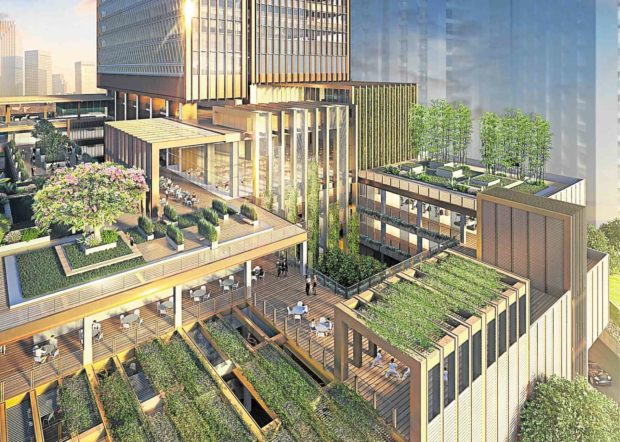
environment,with open spaces and greenery. (A computer-generated image)
Elpidio Ibañez, who has been with FPH since 1979 and in 1995 became the president of First Holdings, said of the building: “Please remember this was a fortress where many battles were fought.”
How that description must have resonated with the (ex) corporate warriors who reunited that afternoon.
In her remarks, Cedie echoed a far-reaching perspective: “We are meeting for a very special purpose tonight, and that is to honor the place we call home… Within those walls was forged a system of values that today defines life and work in the Lopez Group—values that in their nature are as much entrepreneurial as altruistic, as much familial as nationalistic.”
The coffeetable book, produced and designed by ArtPostAsia Inc., contains not only the architecture and legacy of Benpres building, but also the heartwarming memories of people who worked there for decades.
Easily top of mind is Margarita Fragante, who began working with the Lopez companies before World War II. She was executive secretary of Eugenio Sr., then Eugenio Jr. and Oscar. Her smiling portrait graces a page of the book. Unfortunately, she couldn’t make it that afternoon.
Another old-timer, Anacleto Banaag, executive vice president and general manager of Lopez Inc., recalls in the book a day he can’t forget, the day martial law was proclaimed: “We were not allowed to enter the building until two days later (Sept. 23). Nandiyan lang kami sa harap, nakaupo. We were eager to get our personal things—some of us had passbooks kept in our drawers.”

But easily regaling were the memories of today’s generation of Lopezes, whose personal and career growths happened right within the walls of Benpres.
Benjamin R. Lopez, vice president of First Philippine Holdings Corp., writes in the book an unforgettable moment in the early ’80s: “… during an inter-company basketball tournament held on the fourth-floor roof deck, I was given a mascot’s jersey to represent Benpres Corp. The guest of honor was basketball star and legend Robert “Big J” Jaworski. I, along with my cousins, Beaver, Mike, and Mark, was thrilled…
“When I moved back to Benpres in 2005, after being assigned to Rockwell Land in Makati for close to 10 years, I saw the transformation in the character of the building. Not only was smoking banned… but now everyone was encouraged to take the stairs. It was transformed and affectionately called the ‘stairway to wellness.’”
To Benjamin’s generation, the memories of the building and its vicinity started with the vast tracts of cogon-grass land, where car races took place, and where people learned to drive.
In time, however, to today’s generation, the building has come to represent surmountable challenges—a long tunnel with the promise of light at the end.
In his closing remarks, Federico R. Lopez, chair and CEO of First Philippine Holdings Corp., described the journey that was both personal and to a significant extent, national.
“Much of the building started to come alive after 1986, our search for a new core business, and the reestablishment of quite a number like Bayantel, SkyCable, ABS -CBN Publishing, MNTC, FPIP, and Rockwell. But for me I felt the real bustle come alive with our re-entry into the power generation business.
“At First Gen, our offices were in the windowless middle area of FPH’s fourth floor, so we were never conscious of what time of day or night it was. Most of the time, we’d end our days at 9 p.m. and come back early the next day. As a team, we tackled every challenge and difficulty that came our way. Nothing was too big, or too small…. I always idealize that period when purpose, entrepreneurial fervor, and high caliber of professionalism came together to accomplish our great undertaking and together, we all ushered in a new Philippine gas industry.
“We lived on buckets of coffee, Au Bon Pain sandwiches, oatmeal raisin and chocolate chip cookies, and chocolate croissants; we gained a lot of weight and racked up elevated cholesterol levels because nothing else in the world mattered but the Sta. Rita project. We were still in our 30s and felt we could abuse our bodies with impunity… Nevertheless, at the time we were happy beyond a doubt, and those fires forged working comradeships that remain as strong and as sharp as a sword’s edge to this day…
“Undoubtedly, Benpres was witness to the Lopez Group’s determination to start or build up businesses that are catalysts for national development, which is testament to one of its core values: A Pioneering Entrepreneurial Spirit…
“As my dad says—And so it’s time. Benpres Building, witness for close to half a century to the ebb and flow of family fate and fortune, goes into its own fitting retirement. It is coming down, but only to rise again to meet the future.
“This future is called The Chronicle—which harkens back to the Lopez Group’s heritage and stands high on where it is headed today and for generations to come. The development is anchored on sustainable technology and design principles and will be one of the most energy-efficient, even water-efficient buildings in the country once completed….”
He writes in the book that the Chronicle building’s architecture will be a contemporary take on the design of the original Benpres.
Lopez told the assembly at the book launch, “Even as we move forward, we won’t forget to look back on our roots. We owe a great deal of learning from the rich history of this building and how it taught us to endure and prosper through the inevitable ups and downs of life.”
So how does one say goodbye to a building?
You don’t need to, because a building becomes a place in the heart.

